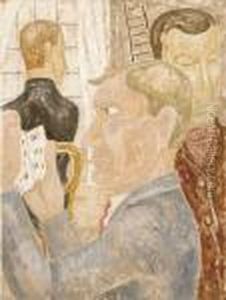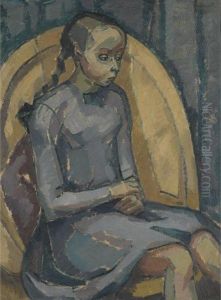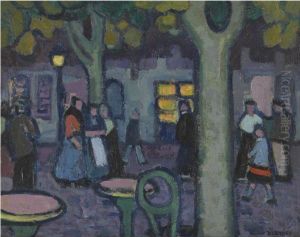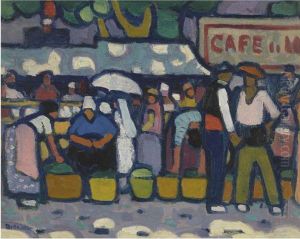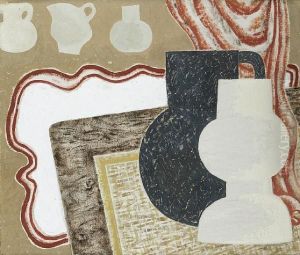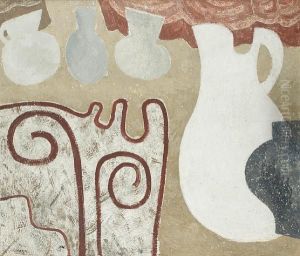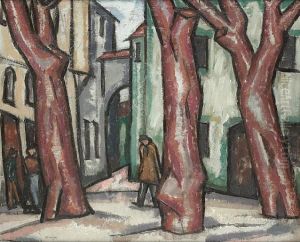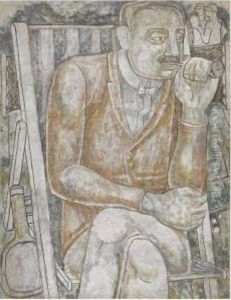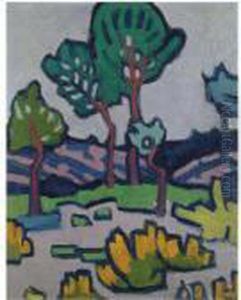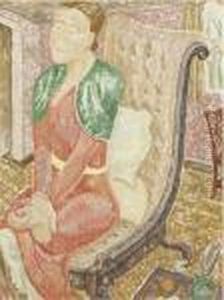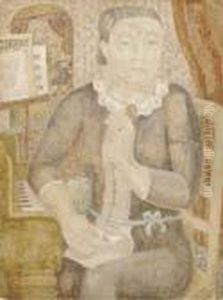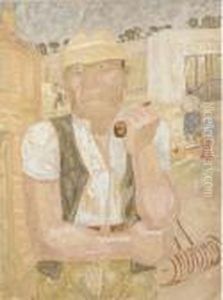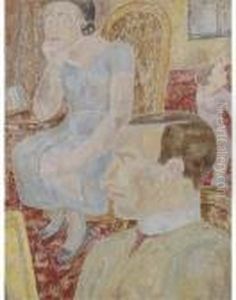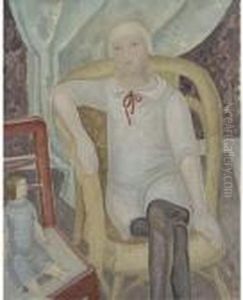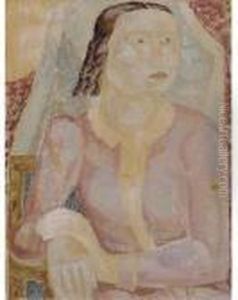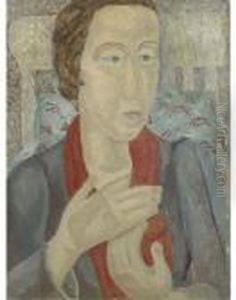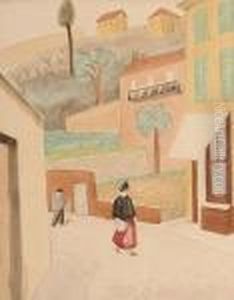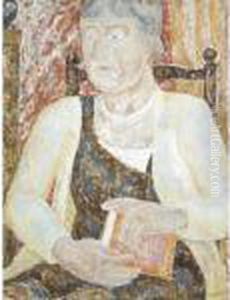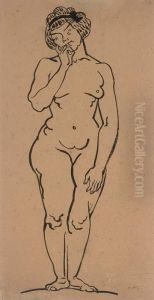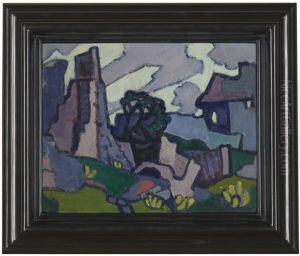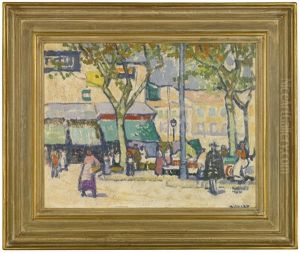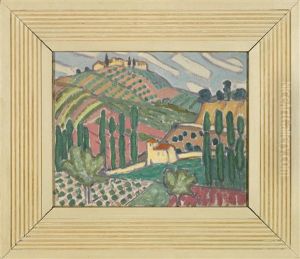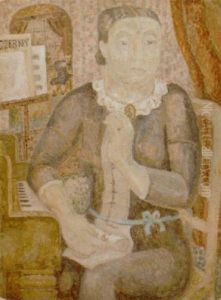Jessica Dismorr Paintings
Jessica Dismorr was an English painter and illustrator, recognized for her contributions to the avant-garde movements in England during the early 20th century. Born on May 14, 1885, in Gravesend, Kent, she grew up in a well-to-do family that encouraged her artistic pursuits. Dismorr showed artistic promise from a young age and was able to study art extensively, which was somewhat unusual for a woman of her time.
Dismorr's formal art education began at the Slade School of Fine Art in London, one of the most prestigious art schools in the United Kingdom. She later continued her studies in Paris, which was then the epicenter of the avant-garde art world. In Paris, she attended the Académie de La Palette, where she was exposed to the latest trends in art, including Fauvism and Cubism. These experiences were pivotal in shaping her artistic style.
In 1912, Dismorr became a member of the Vorticist movement, which was Britain's answer to Italian Futurism and was influenced by Cubism. The group sought to express the dynamism of the modern world through abstract and geometric forms. Dismorr contributed to the movement's only two issues of their journal, 'BLAST', with both literary and visual works. Her work was also included in the 1915 Vorticist Exhibition in London.
After World War I, the Vorticist movement lost momentum, but Dismorr continued to engage with other avant-garde groups. She joined the Seven and Five Society, a group that originally upheld traditionalist values in art but later became a pivotal force in the promotion of modern art in Britain. Throughout the 1920s and 1930s, Dismorr's work shifted towards a more lyrical abstraction, and she began to explore landscape painting, still life, and portraiture, while maintaining her distinctive modernist edge.
Dismorr's career was also marked by periods of personal struggle. She battled with mental health issues and the social constraints imposed on women artists during her lifetime. Despite these challenges, she remained an active and vibrant part of the London art scene until her death. Sadly, her life came to a tragic end when she took her own life on August 29, 1939, at the age of 54. Dismorr's work was somewhat overlooked in the years following her death, but more recent scholarship has begun to recognize her as a significant figure in the development of British modernism.
